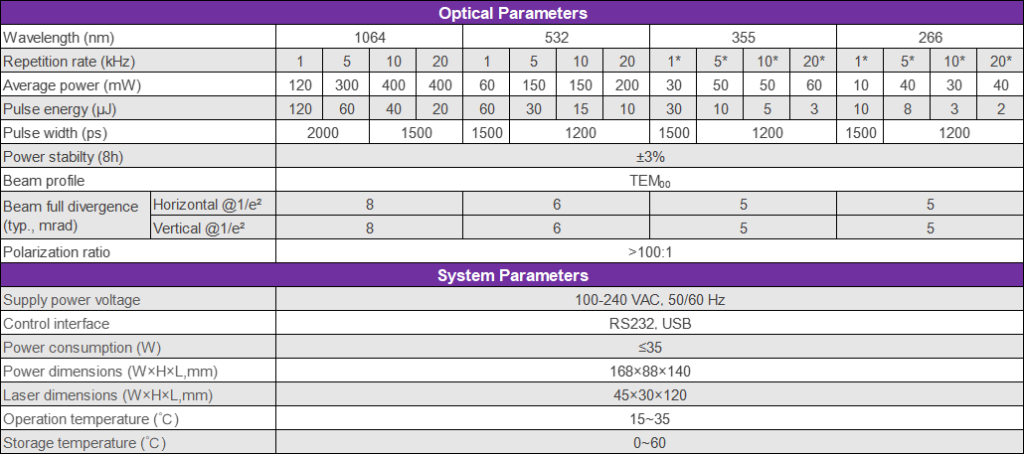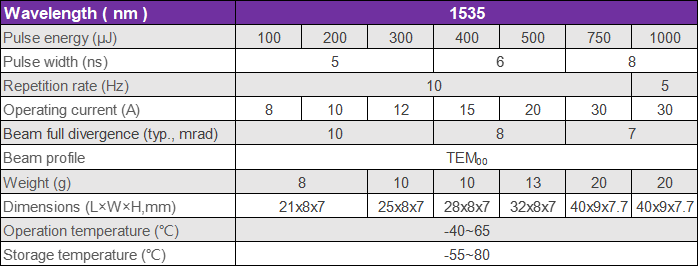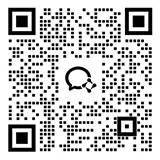Lasers Play an Important Role in the Field of Laser Ranging
Ordinary light sources have poor directionality and affect the accuracy of ranging. Since the advent of Maiman’s first laser in 1960, laser ranging has gradually occupied the ranging market. Laser ranging is a technology that uses the propagation time of a laser beam to measure the distance of a target. The laser generates a laser pulse and measures its round-trip time to achieve distance measurement. Its working principle is based on the fact that the speed of light is known, and the propagation speed in most media such as air is very stable. There are many types of lasers commonly used in the field of laser ranging, which are mainly classified according to the working principle and characteristics of the laser. The following are some common types of lasers used for laser ranging:
- Solid-State Lasers:
Nd:YAG laser: uses neodymium-doped yttrium aluminum garnet crystal as the active medium, usually works in the infrared band, and is suitable for long-distance ranging applications.
Er:YAG laser: uses erbium-doped yttrium aluminum garnet crystals, usually works in the mid-infrared band, and can be used for applications such as atmospheric ranging.
- Semiconductor Lasers:
Diode lasers: Lasers based on semiconductor materials, small and efficient, often used in close-range ranging and LiDAR systems.
- Gas Lasers:
CO2 lasers: used for applications such as long-distance ranging in the atmosphere and atmospheric pollution monitoring.
- Fiber Lasers: use optical fiber as the laser medium, suitable for high-precision and stable ranging needs.
The accuracy of laser ranging technology mainly depends on the accuracy of time measurement and the stability of the emission and reception process of laser pulses. In order to improve the measurement accuracy, it is usually necessary to use precise time measurement devices and high-quality lasers. Beijing RealLight has been deeply engaged in the research and development and production of lasers for more than ten years. It directly hits the pain points and catches up. It has independently developed and produced a series of lasers that can be used for laser ranging, including but not limited to the most popular eye-safe 1535nm erbium glass laser, 1064nm Nd:YAG laser, and 532nm microchip laser. It is involved in a wide range of fields and can be used for laser rangefinders, air clearance radars, lidars, distance-gated imaging, coastline depth measurement, forest mapping, scientific research, etc.
Pulsed laser rangefinders have the characteristics of small size, light weight, all-solid-state, high efficiency, high reliability, and high speed. Therefore, they are widely used in construction, measurement and control and other fields. The MCA series of semiconductor-pumped passively Q-switched solid-state lasers independently developed by RealLight have stable single-pulse energy, good beam quality, and are stable and reliable. The semiconductor pump module and laser crystal are integrated into a design, and the compact laser head is easy to install and integrate. The system supports internal and external triggering. This series of products includes four wavelengths: 1064nm, 532nm, 355nm and 266nm. The fully sealed module inside the laser head can be used by customers for secondary development and application. For example: 532nm microchip laser with TDC-GP22 model time-to-digital converter in the TDC-GPX series developed by ACAM can use interpolation measurement to obtain high-precision time intervals, and offer pulse laser ranging experimental courses in colleges and universities; 1064nm laser pulse width can reach 1.2ns, pulse energy can reach 120μJ, and the highest repetition frequency can reach 20kHz, which is suitable for ultra-long distance measurement. Detailed parameters are as follows:

With the development of the times, people have put forward new requirements for laser ranging: eye safety. In this regard, the 1535nm Er:glass laser developed by RealLight has an operating wavelength of 1535nm, a laser pulse width of 5-8ns, and a pulse energy of 100-1000μJ. It adopts semiconductor packaging technology, and the pump module and laser crystal are integrated and fully sealed. It has the characteristics of small size, light weight (the lightest is 8g), and a wide temperature range of -40~65℃. It is suitable for handheld ranging, gun aiming, pods, fuses, and border monitoring. The detailed parameters are as follows:

Selecting the type of laser suitable for a specific application requires considering factors such as its wavelength, power, frequency stability, pulse characteristics, and cost. Different types of lasers may have their own advantages in different ranging applications.
Disclaimer: Part of the content of this article comes from the Internet. It is for the purpose of technical research and exchange. It is only for your reference and learning. If there are any errors in the description or academic errors, please promptly raise them. If there are any copyright issues, please contact us and we will verify and delete them as soon as possible.


